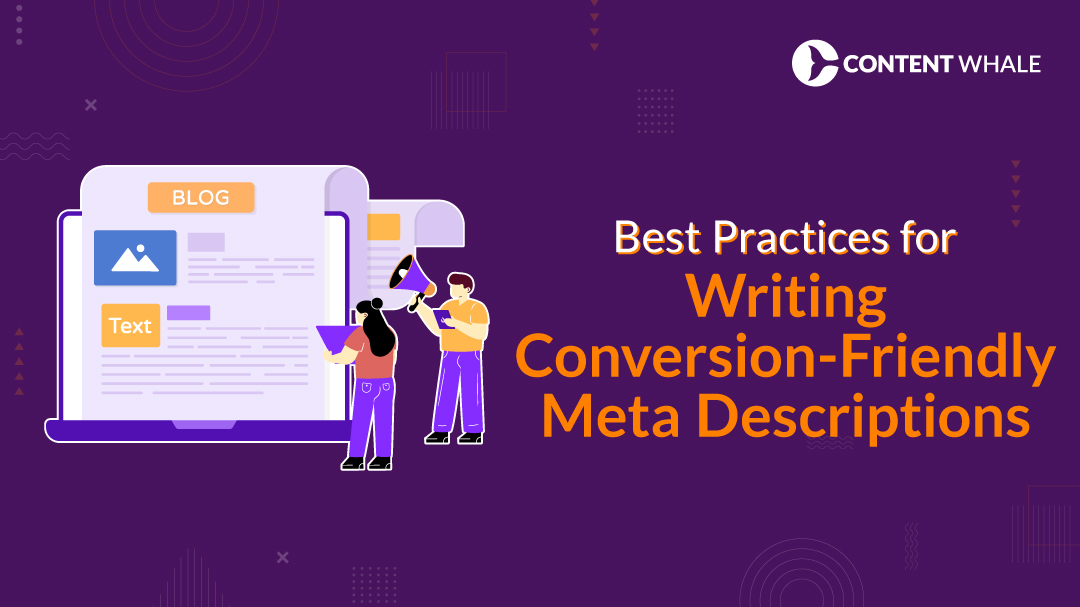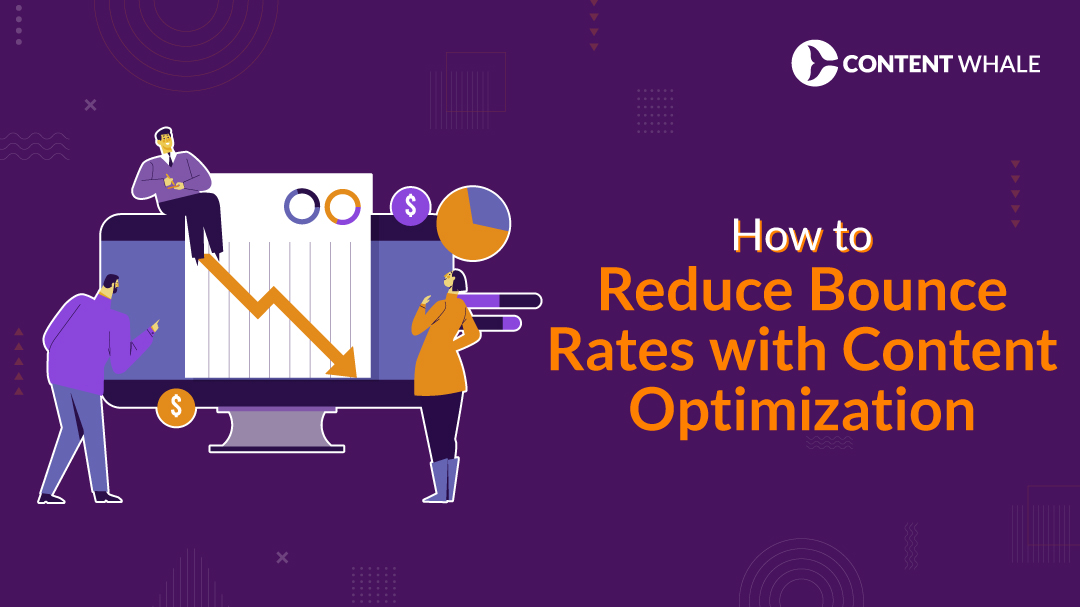Are you struggling to get your content noticed by search engines? You’re not alone. Many writers create amazing content that never reaches its full potential online. That’s where SEO copywriting techniques come into play. By blending engaging writing with search engine optimization, you can boost your rankings on search engine results pages (SERPs) and attract more organic traffic. Understanding how to implement SEO best practices in your writing is key to improving visibility. In this blog, we’ll explore 10 proven strategies that can enhance your SEO content writing and help you climb to the top of search results. We’ll cover everything from effective keyword research and optimizing your meta tags, to improving content readability and leveraging on-page SEO tactics. Whether you’re new to SEO or looking to refine your skills, these tips will help you create content that ranks higher and engages your audience. Ready to transform your content and see real results? Let’s get started!
1. Understand Your Audience and Search Intent
Knowing your audience is the first step in mastering SEO copywriting techniques. Who are they? What problems are they trying to solve? Start by creating detailed profiles of your ideal readers. Use surveys, social media insights, and website analytics to gather information about their interests and behaviors.
Once you have a clear picture of your audience, focus on search intent. This means understanding what your readers are looking for when they use specific keywords. Are they seeking information, looking to make a purchase, or trying to navigate to a particular site? Align your content to match their intent.
Tips to Align with Search Intent:
- Conduct Keyword Research: Use tools to discover what terms your audience uses. Look for long-tail keywords that reflect specific queries.
- Analyze SERPs: Search your targeted keywords and see what types of content are ranking. This gives you clues about what Google believes satisfies the intent.
- Create Relevant Content: If users are searching for “how to fix a leaky faucet,” provide a step-by-step guide rather than a sales pitch for plumbing services.
2. Conduct Thorough Keyword Research

Before you start writing, it’s essential to know which words and phrases your audience uses. Effective keyword research forms the backbone of successful SEO content writing. By identifying the right terms, you can optimize your content to rank higher in search results and attract more organic traffic.
Steps for Effective Keyword Research:
A) Use Reliable Tools:
- Utilize platforms like Google Keyword Planner, SEMrush, or Ahrefs.
- Discover popular search terms related to your topic.
- Identify keywords with high search volume and low competition.
B) Focus on Long-Tail Keywords:
- Target specific phrases like “best SEO copywriting techniques for beginners.”
- Long-tail keywords are less competitive and more specific to user intent.
- They often lead to higher conversion rates.
C) Analyze Competitors:
- Examine the keywords your competitors are ranking for.
- Identify gaps in their content where you can provide more value.
- Use this insight to refine your own content strategy.
D) Consider Search Intent:
- Understand why users search for certain terms.
- Align your content with the user’s search intent, whether informational, navigational, or transactional.
- This alignment enhances the user experience and keeps visitors engaged.
E) Organize Your Keywords:
- Group related keywords to plan your content effectively.
- Use primary keywords in headings like the H1 tag and secondary keywords in subheadings.
- This helps with header optimization and improves on-page SEO.
3. Optimize Title Tags and Meta Descriptions
Crafting effective title tags and meta descriptions is a vital SEO copywriting technique that can boost your visibility on the SERP. These elements are often the first impression users have of your page, so making them count is essential for improving your SEO for rankings.
A) Tips for Optimizing Title Tags:
- Include Target Keywords: Start your title with your main keyword, such as “SEO Copywriting Techniques,” to signal relevance to search engines.
- Keep It Under 60 Characters: This ensures your entire title displays properly in search results.
- Make It Compelling: Use action words or questions to engage users and increase organic traffic.
B) Guidelines for Meta Descriptions:
- Incorporate Secondary Keywords: Naturally weave in terms like “SEO content writing” and “SEO best practices” to cover related search queries.
- Stay Within 155 Characters: Longer descriptions might get truncated, so be concise.
- Align with Search Intent: Clearly describe what users will find on your page to enhance the user experience.
C) Additional Suggestions:
- Use a Call to Action: Phrases like “Learn how to improve your rankings” can encourage clicks.
- Avoid Duplicate Meta Tags: Each page should have unique titles and descriptions to prevent confusion and improve on-page SEO.
4. Structure Your Content with Headers (H1, H2, H3)

Organizing your content with proper headings is a powerful SEO copywriting technique that can significantly improve your rankings. Using headers like H1 tags, H2s, and H3s not only makes your content more readable but also enhances your on-page SEO by helping search engines understand the structure of your page.
A) Why Proper Headers Matter:
- Improves Content Readability: Breaking your content into sections with clear headings makes it easier for readers to digest information.
- Enhances User Experience: Well-structured content keeps readers engaged, reducing the bounce rate.
- Boosts SEO for Rankings: Search engines use headers to determine the relevance of your content to a user’s query, affecting your position in the SERPs.
B) Tips for Effective Header Optimization:
- Use Descriptive Headings: Clearly describe what each section is about. This helps both readers and search engines understand your content.
- Incorporate Keywords Naturally: Include your primary keyword and secondary keywords in your headers where it fits naturally. For example, a header could be “Top SEO Best Practices for Beginners.”
- Maintain a Logical Hierarchy:
- Start with an H1 tag for your main title.
- Use H2 tags for primary sections.
- Apply H3 tags for subsections under each H2.
- Align with Search Intent: Craft your headings to match what users are searching for. This alignment improves your chances of ranking higher.
- Enhance with LSI Keywords: Sprinkle in related terms like content optimization and header optimization to provide context.
C) Example Structure:
H1: 10 Proven SEO Copywriting Techniques to Boost Your Rankings
H2: Understand Your Audience and Search Intent
H3: Identifying Your Target Demographic
H3: Aligning Content with User Needs
H2: Conduct Thorough Keyword Research
H3: Utilizing Keyword Tools
H3: Focusing on Long-Tail Keywords
5. Write for Mobile and User Experience
With more than half of all web traffic coming from mobile devices, optimizing your content for mobile is a must. Focusing on mobile users enhances the overall user experience and can improve your SEO for rankings.
Tips for Mobile-Friendly Content:
A) Keep Sentences and Paragraphs Short:
- Break up large blocks of text to make reading easier on small screens.
- Aim for paragraphs that are 2-3 sentences long to boost content readability.
B) Use Responsive Design:
- Ensure your website adapts seamlessly to different screen sizes.
- Test your site on various devices to check for any layout issues.
C) Optimize Images and Media:
- Compress images to reduce loading times, which can lower your bounce rate.
- Use formats that are compatible with mobile devices.
D) Simplify Navigation:
- Utilize clear headings like the H1 tag and subheadings for better header optimization.
- Implement easy-to-use menus and buttons that are touch-friendly.
E) Enhance Load Speed:
- Mobile users expect quick access to information.
- Optimize your site’s performance by minimizing code and leveraging browser caching.
F) Benefits of Focusing on Mobile:
- Improved On-Page SEO:
- Mobile optimization is a key factor in search engine optimization and follows SEO best practices.
- Better User Engagement:
- A positive mobile experience keeps users on your site longer, reducing the bounce rate.
- Increased Organic Traffic:
- Satisfied users are more likely to return and share your content, boosting your content strategy.
6. Leverage Internal and External Links

Linking strategically within your content is a powerful SEO copywriting technique that can boost your site’s performance. Using both internal and external links helps search engines understand your website’s structure and increases your authority in your niche.
A) Benefits of Internal Linking:
- Enhances Navigation:
- Internal links guide readers to related content on your site.
- Keeps visitors engaged longer, reducing the bounce rate.
- Improves On-Page SEO:
- Distributes page authority throughout your site.
- Signals to search engines which pages are most important.
B) Tips for Effective Internal Linking:
- Use descriptive anchor text that includes relevant keywords.
- Link to high-quality, relevant pages that add value for the reader.
- Ensure all links are SEO-friendly by checking for and fixing broken links.
C) Advantages of External Linking:
- Builds Authority:
- Linking to reputable sources adds credibility to your content.
- Shows search engines that you’ve conducted thorough research.
- Enhances User Experience:
- Provides readers with additional resources.
- Strengthens your overall content strategy.
D) Best Practices for External Linking:
- Link to authoritative websites related to your topic.
- Open external links in a new tab to keep users on your site.
- Avoid linking to direct competitors unless it’s necessary.
| # | Step | Description | Impact |
| 1 | Audit Existing Content | Review your site to identify link opportunities. | Enhances site structure and user navigation. |
| 2 | Use Descriptive Anchor Text | Employ relevant keywords in your anchor text. | Improves SEO relevance and ranking signals. |
| 3 | Link to High-Quality Pages | Connect to authoritative internal and external pages. | Builds credibility and trust with readers and search engines. |
| 4 | Balance Internal and External Links | Maintain a healthy ratio of both link types. | Provides value to users while boosting SEO. |
| 5 | Open External Links in New Tabs | Set external links to open in new browser tabs. | Keeps users on your site longer, reducing bounce rate. |
| 6 | Regularly Check for Broken Links | Use tools to find and fix broken links. | Enhances user experience and maintains SEO health. |
| 7 | Update Links with New Content | Add links to new posts from older content. | Keeps content fresh and interconnected. |
| 8 | Avoid Overlinking | Don’t overwhelm content with too many links. | Ensures readability and prevents SEO penalties. |
| 9 | Link Relevant Content | Only link to pages related to the current topic. | Increases user engagement and time on site. |
| 10 | Use NoFollow for Untrusted Links | Apply NoFollow tags to unverified external links. | Protects your site’s integrity and SEO standing. |
7. Focus on Content Readability
Making your content easy to read is essential for keeping your audience engaged and improving your SEO content writing. When readers can quickly grasp your message, they’re more likely to stay on your page, which can positively impact your bounce rate and overall user experience.
Tips to Enhance Content Readability:
A) Use Simple Language:
- Write as if you’re speaking to someone in everyday conversation.
- Avoid technical jargon or explain it clearly if you must use it.
- This approach makes your content accessible to a wider audience.
B) Write Short Sentences and Paragraphs:
- Keep sentences concise to maintain reader interest.
- Limit paragraphs to 2-3 sentences to make your content skimmable.
- This structure is especially helpful for readers on mobile devices.
C) Utilize Formatting Tools:
- Use bullet points and numbered lists to break up text.
- Highlight key points with bold or italics to draw attention.
- Incorporate subheadings using H1 tags and others for better header optimization.
D) Engage the Reader Directly:
- Ask questions to involve the reader.
- Provide clear answers and actionable tips.
- Include a compelling call to action to encourage further engagement.
E) Use Readability Tools:
- Employ tools like Hemingway Editor or Grammarly to assess your content’s readability.
- Aim for a reading level that’s comfortable for your target audience.
Why Readability Matters for SEO:
Improving content readability is a key part of SEO best practices. Search engines favor content that offers a good user experience, which includes how easily visitors can read and understand your text. Well-structured and readable content can lead to:
- Lower Bounce Rates: Readers are less likely to leave your page if they find the content engaging and easy to read.
- Better On-Page SEO: Search engines recognize and reward content that is well-organized and user-friendly.
- Higher SEO for Rankings: Enhanced readability can contribute to better rankings on the SERPs, attracting more organic traffic.
8. Optimize for Featured Snippets
Getting your content featured at the top of search results can dramatically increase visibility and drive more organic traffic to your site. Featured snippets are selected search results that are placed in a special box on the SERP, aiming to answer the user’s query immediately.
| # | Step | Description | Impact |
| 1 | Identify Target Questions | Research common queries your audience asks. | Increases chances of appearing in snippets. |
| 2 | Provide Concise Answers | Answer questions directly in 40-60 words. | Helps search engines feature your content. |
| 3 | Use Structured Formatting | Utilize bullet points, lists, or tables. | Aligns with preferred snippet formats. |
| 4 | Optimize Header Tags | Place questions in H2 or H3 tags. | Enhances content hierarchy for SEO. |
| 5 | Include Relevant Keywords | Naturally use primary and secondary keywords. | Improves relevance and ranking. |
| 6 | Implement Schema Markup | Add FAQ or HowTo schema to your content. | Increases visibility in rich results. |
| 7 | Ensure Mobile-Friendliness | Optimize content for mobile devices. | Enhances user experience and engagement. |
| 8 | Build Page Authority | Acquire quality backlinks. | Boosts credibility and ranking factors. |
| 9 | Update and Monitor Content | Refresh content regularly and track performance. | Maintains relevance and effectiveness. |
Tips to Optimize for Featured Snippets:
A) Identify Common Questions:
- Use keyword research tools to find questions your audience is asking.
- Focus on queries that start with “how,” “what,” “why,” and “when.”
B) Provide Clear and Concise Answers:
- Answer the question directly within the first few sentences.
- Keep your response between 40-60 words for optimal snippet length.
C) Use Structured Content:
- Incorporate bullet points, numbered lists, or tables to organize information.
- Utilize proper headings like the H1 tag and subheadings for better header optimization.
D) Include Relevant Keywords Naturally:
- Integrate your primary keyword and secondary keywords in your answers.
- This helps with on-page SEO and signals relevance to search engines.
9. Incorporate Engaging CTAs (Call to Action)
An effective call to action (CTA) guides your readers toward the next step you want them to take. Including engaging CTAs is a vital SEO copywriting technique that can boost user engagement and improve your SEO for rankings.
Tips for Crafting Effective CTAs:
A) Be Clear and Action-Oriented:
- Use strong verbs like “Download,” “Subscribe,” or “Learn More.”
- Clearly state what the user will gain by taking action.
B) Align with Your Content Strategy:
- Ensure the CTA is relevant to the content they’ve just read.
- For example, after a post about keyword research, invite them to “Get Our Free Keyword Research Guide.”
C) Place CTAs Strategically:
- Position CTAs where they make sense, such as after valuable content or at the end of the post.
- Avoid interrupting the content readability with intrusive pop-ups.
D) Make CTAs Stand Out Visually:
- Use contrasting colors and bold text to draw attention.
- Ensure they are mobile-friendly for users on all devices.
Why CTAs Matter for SEO:
Engaging CTAs can reduce your site’s bounce rate by encouraging visitors to explore more pages, which signals a positive user experience to search engines. This practice aligns with SEO best practices and enhances your overall on-page SEO efforts.
10. Continuously Monitor and Improve Performance
Implementing SEO copywriting techniques is just the beginning. To stay ahead, you need to regularly assess how your content is performing and make necessary adjustments. Monitoring your SEO efforts helps you understand what’s working and where there’s room for improvement.
Tips for Monitoring and Improving Performance:
A) Track Essential SEO Metrics:
- Use tools like Google Analytics and Google Search Console to monitor organic traffic, bounce rate, and user experience metrics.
- Keep an eye on your SERP rankings for targeted keywords, including both primary and long-tail keywords.
- Analyze which pages are performing well and which need content optimization.
B) Adjust Your Content Strategy:
- Update older content to include new SEO best practices and relevant information.
- Refresh your meta tags and headings to improve on-page SEO.
- Incorporate new keywords that emerge from ongoing keyword research.
C) Monitor Backlinks and Link Building Efforts:
- Use tools like Ahrefs or SEMrush to track your backlinks.
- Engage in link building strategies to improve your site’s authority.
- Ensure all links are functioning properly to enhance the user experience.
D) Test and Refine Calls to Action:
- Experiment with different call to action phrases and placements.
- Use A/B testing to determine which CTAs generate the most engagement.
E) Stay Updated with SEO Trends:
- SEO is constantly changing due to search engine algorithm updates.
- Follow reputable SEO blogs and forums to stay informed about new ranking factors and SEO-friendly practices.
Conclusion

Implementing these SEO copywriting techniques can significantly improve your website’s visibility and rankings. By focusing on SEO best practices like thorough keyword research, optimizing your meta tags, and enhancing the user experience, you’re setting yourself up for success. Remember to keep your content reader-friendly, use effective on-page SEO strategies, and continually monitor your performance.
The key is to create valuable content that resonates with your audience while satisfying search engine algorithms. Start applying these strategies today, and watch your SEO content writing efforts pay off with increased organic traffic and higher positions on the SERPs.
If you need assistance refining your content strategy or boosting your SEO for rankings, we’re here to help. Let’s work together to achieve your digital marketing goals.
FAQs
1. What is SEO Copywriting?
SEO copywriting is the art of creating content that appeals to both readers and search engines. It involves integrating keywords and key phrases naturally into your writing to improve your visibility on search engine results pages (SERPs). The goal is to attract more organic traffic by aligning your content with what users are searching for. This technique combines engaging storytelling with SEO best practices to enhance the user experience and boost your on-page SEO. By focusing on both readability and search engine optimization, you can improve your SEO for rankings and reach a wider audience.
2. How Important is Keyword Research in SEO Copywriting?
Keyword research is a fundamental step in SEO content writing. It helps you understand what terms your target audience uses when searching for information related to your topic. By identifying these long-tail keywords and incorporating them into your content, you increase the chances of ranking higher on SERPs. Effective keyword research guides your content strategy, ensuring that you’re addressing the needs and interests of your readers. This practice not only enhances the relevance of your content but also improves your site’s visibility, leading to increased organic traffic and better SEO for rankings.
3. What are Title Tags and Meta Descriptions?
Title tags and meta descriptions are HTML elements that provide information about your webpage to search engines and users. The title tag appears as the clickable headline in search results and should include your primary keyword to improve on-page SEO. Meta descriptions are brief summaries that appear below the title tag on the SERP. They should be compelling and include secondary keywords to encourage users to click on your link. Optimizing these elements is a crucial SEO copywriting technique that can enhance your site’s visibility and increase click-through rates.
4. How Can I Improve My Content’s Readability?
Improving content readability is essential for keeping your audience engaged and reducing the bounce rate. Here are some tips to enhance readability:
- Use Simple Language: Write in a conversational tone and avoid technical jargon.
- Short Sentences and Paragraphs: Keep sentences concise and limit paragraphs to 2-3 sentences.
- Organize with Headers: Use headings like the H1 tag and subheadings for better header optimization.
- Bullet Points and Lists: Break up text with bullet points or numbered lists for clarity.
- Visual Elements: Incorporate images or infographics to support your content.
By focusing on readability, you improve the user experience and adhere to SEO best practices, which can positively impact your SEO for rankings.
5. What is the Role of Internal Links in SEO Copywriting?
Internal linking involves linking to other pages within your website. This strategy plays a significant role in search engine optimization by:
- Improving Site Navigation: Helps users find related content, enhancing the user experience.
- Distributing Link Equity: Shares ranking power across your site, which can boost your SEO for rankings.
- Establishing Site Architecture: Assists search engines in understanding the structure of your website.





